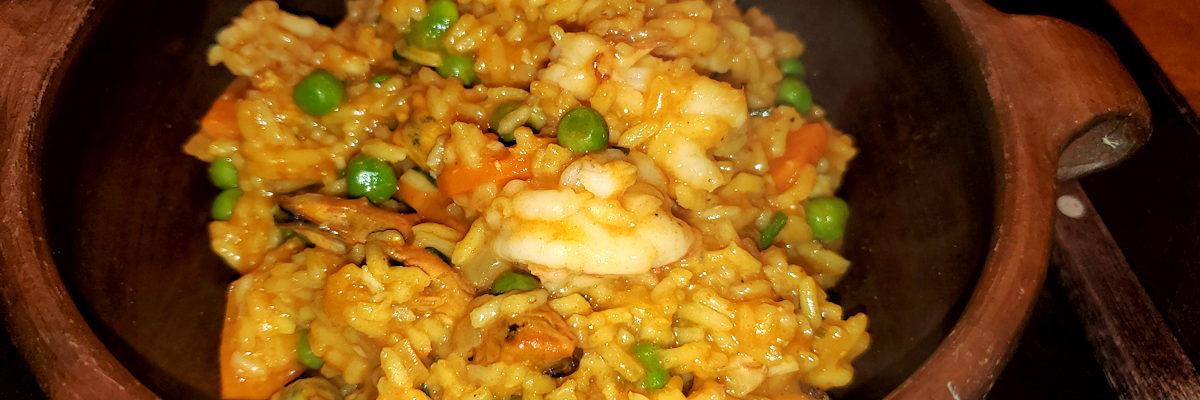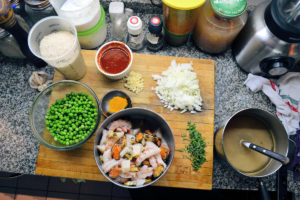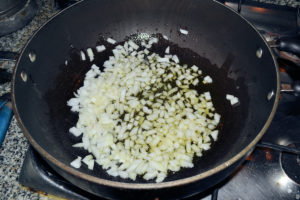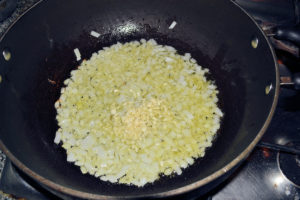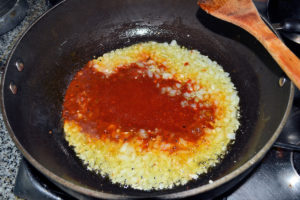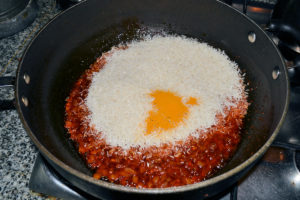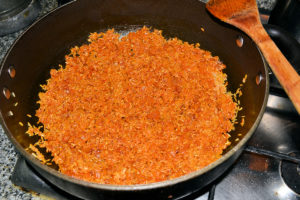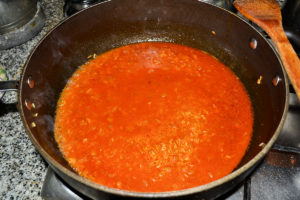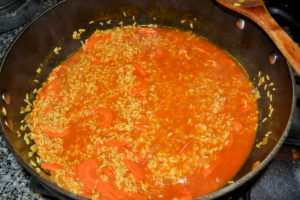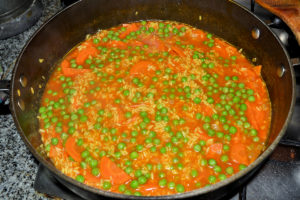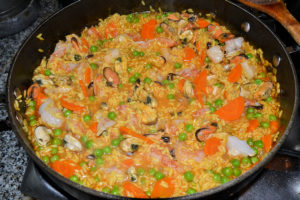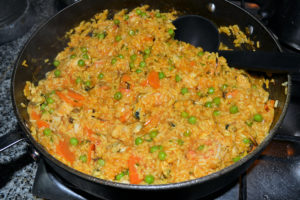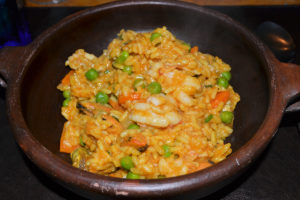As promised in the previous post, a step-by-step for Arroz con Frutos del Mar, or Rice with Fruits of the Sea. This is not 100% the traditional way that the more classic arroz con mariscos, a common Peruvian dish. I’ll point out the differences as we go – much of it simply because of what’s available in our larder during the cuarentena
Amusing side note. On my phone, Google Assistant often activates if my thumb is too close to the button that activates it. It’s annoying, because it happens far too easily. And it often picks up on whatever I’m talking about at the moment and launches the Chrome browser to a page that’s related. As the word cuarentena is bandied about in conversation here more, I now have a browser history filled with links to pages about car antennas.
500gm rice (a pound is fine); puree of 2 rehydrated ají panca; 2 chopped garlic cloves; 1 chopped white onion; 1 thawed bag of peas; 1 teaspoon of turmeric; 1 kilo (2 pounds fine) of mixed seafood – traditionally it would be shrimp, clams, mussels, and calamari rings and tentacles – we didn’t have all that, so it’s cubes of fish (hake), mussels, and prawns, you work with what you have; and, traditionally, chopped cilantro and/or parsley, I only had chives in house, so, chives it was; and seafood stock, mine a mix of dashi with some shrimp shells – you’ll need about 1½-1¾ times whatever the volume of your dried rice is – because of the way it’s cooked, it’s more liquid than you’d normally use to make rice, but a lot of it evaporates, like when making risotto. And, like risotto, keep it hot in a pot on a separate burner.
Saute the onions in oil until softened, 2-3 minutes, over high heat.
Add garlic and saute a minute more.
Add chili puree and cook another two minutes. By the way, this is a point where, if you don’t have access to ají panca, or a common substitute, guajillo chilies, to rehydrate and puree, just use any good chili paste that you like. Ají panca is not a particularly spicy chili, so either go for something mild, or just use it sparingly. You can always add a little more later.
Add rice and turmeric, stir well, and continue cooking to lightly toast the rice, for about 3 minutes, stirring regularly.
It will look like this… at this point you’re going to basically start making this like risotto, though it’s made with regular “long grain” rice.
Add a couple of ladles of the stock, and stir regularly to incorporate it. Turn the heat down to a low-medium. And just keep adding the stock 1-2 ladles at a time as it’s absorbed. It’s a little faster than risotto rice, and you can get away with stirring regularly rather than continuously.
At this point, you’ll notice there are carrots in there. It was a whim, and not something traditional to the recipe, but we just need more fresh veg in our diet, so I sliced up a carrot and tossed it in to cook along with the rice. If I were doing it over from scratch, I’d probably add the carrots at the same time as the garlic, in the second step.
When the rice is almost done, just still having a little chew to it, but not crunchy, add the peas. Cook for a couple of minutes more.
Add the seafood. Cook just long enough to cook them through, maybe 4-5 minutes tops. A lot of that will depend on which seafood you use and how big the pieces are. The one thing I’d hold back on would be if I had calamari rings, I’d literally put them in at the last minute, even after the flame is turned off – there’s enough heat in this pot to cook them through in about 30 seconds without them turning rubbery.
Add the herbs, taste and adjust seasoning (if your stock is well seasoned, it shouldn’t need anything), and that’s your finished Arroz con Frutos del Mar.
Serve it up and enjoy!
